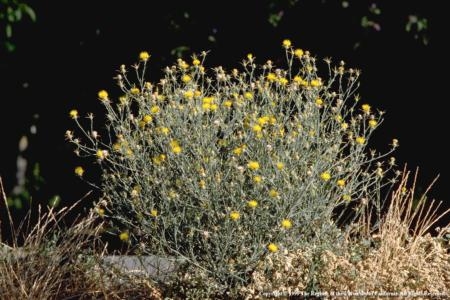UC Blogs
Collaboration may be an effective way to fund wildland weed control
Many funding sources for weed eradication have been reduced or completely eliminated. According to the California Assembly Budget Committee’s annual Preliminary Review of the Governor’s Proposed 2012-13 State Budget, the California Department of Food and Agriculture will absorb a permanent budget reduction of $12 million in program cuts, in addition to a $19 million budget reduction in 2011-12. Funding for weed management areas (WMAs) has been reduced to the point that many WMAs have become inactive or are being managed voluntarily as an adjunct to other duties.
At the California Invasive Plant Council (Cal-IPC: http://www.cal-ipc.org/) annual symposium at Lake Tahoe in October, it was stressed that competition for limited funding will pit us against ourselves and each other. Only by working together, creating collaborative projects, will we be able to benefit from the limited funding opportunities available.
Enter the collaborative grant-funded project. Agencies are looking for applications that demonstrate community support from a diverse range of stakeholders. For example, the Sierra Nevada Conservancy (SNC) is currently reviewing proposals received in response to their Healthy Forests initiative. Proposition 84 — The Safe Drinking Water, Water Quality and Supply, Flood Control, River and Coastal Protection Bond Act of 2006 — will fund approved projects. Five million dollars is available this year for healthy forest projects; next year an equal amount will be available for rangeland projects.
Two weed control projects created by UC Cooperative Extension Central Sierra received SNC invitations to submit complete grant applications. One project is a collaboration between UCCE, the U.S. Forest Service, and Yosemite National Park; another works in partnership with Cal-IPC.
As an example of the collaborative partnerships being sought by funding agencies, the National Fish and Wildlife Foundation is offering the ‘Pulling Together Initiative’ which “seeks proposals that will help control invasive plant species, mostly through the work of public/private partnerships such as Cooperative Weed Management Areas.” Successful projects must “have a project Steering Committee composed of local cooperators who are committed to working together to manage invasive and noxious plants across their jurisdictional boundaries.”
Clearly, in light of decreased federal and state funding, a strategic direction for weed-control projects will be to leverage resources, working together to do what no one agency can accomplish alone.
Two additional collaborative projects, created by Wendy West of UCCE Central Sierra, are highlighted here:
- A Weed-Free Forage List providing California resources for weed-free feed and erosion control materials will soon be posted on Cal-IPC’s website. The site will also contain explanatory information about weed-free certification, along with links to inspection procedures and noxious weed lists.
- Workshops designed to help prevent the spread of weeds during construction, aggregate production and maintenance activities are being offered throughout the state. The workshop is hosted and sponsored by U.S. Forest Service, National Park Service, California Department of Food and Agriculture, University of California and University of Nevada Cooperative Extension, and the California Invasive Plant Council.
A Fresno County workshop was held in January and a sold-out workshop is scheduled for March in Los Angeles County. If you are located in the central California region that includes Amador, Calaveras, El Dorado, Madera, Mariposa, San Joaquin, Stanislaus or Tuolumne counties, please consider attending the next workshop, scheduled for April 9 in Sonora. The final workshop will be held in Truckee on May 2. Register for the workshops here.
Prevention Workshop 2012 flier
Workshop Schedule.Agenda
Feeding Frenzy on Bodega Head
If you're planning to hike the hills around Bodega Head in Sonoma County, watch out for the bears. The woolly bear caterpillars, that is. Last...
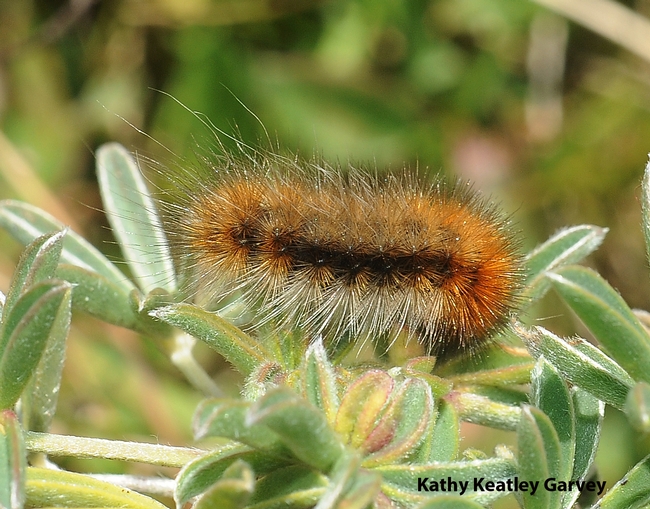
Close-up of woolly bear caterpillar on yellow lupine on Bodega Head, Sonoma County. (Photo by Kathy Keatley Garvey)
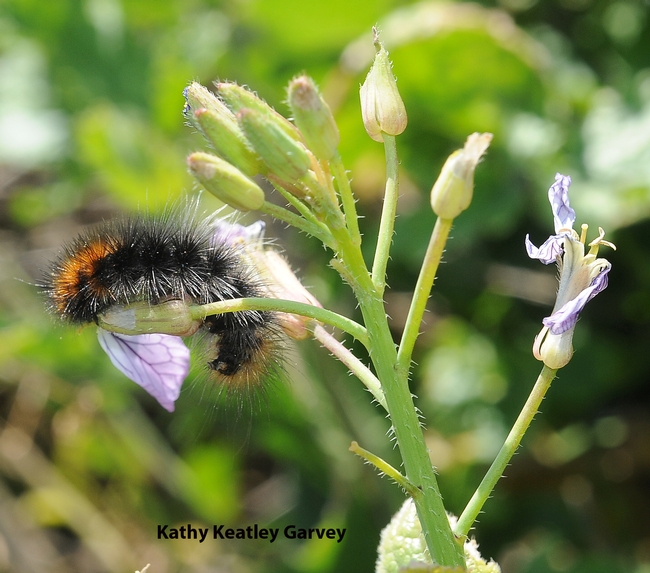
Woolly bear caterpillar on wild radish on Bodega Head, Sonoma County. (Photo by Kathy Keatley Garvey)
Finally
It's finally here! In spite of the rather mild winter we have had here in Solano County, it's nice to herald the arrival of March and the coming of spring. We are almost ready to close the book on another winter, but we do still have a few more weeks of "official" frost season. That said, it is just so hard to see the daffodils blooming, the blossoms on the flowering trees in my backyard, and not go outside and put in a whole batch of new plants. I am holding off, however, until the official beginning of spring (March 20th this year). After that date, I'm willing to take a gamble and start planting.
This year I have a whole new learning curve to work with. Up until recently, my gardens were full sun for the better part of the day. I have three flowering plum trees ('Krauter Vesuvius') in my garden that have been growing larger every year. Last summer, I noticed several roses, pineapple sage, society garlic, and coreopsis 'Moonbeam' were trying to reach for more sunlight, and it dawned on me that they were receiving more shade than sun. Now I am having to decide what to move, what to shovel prune, and what to plant in shade. I never had to shop for shade plants, and now here I am, researching and planning a whole new garden!
I am actually a little excited about some of the plants I have found. Camellias, columbines, Chinese lanterns, Japanese maples, liriope, bleeding heart are just a few of the plants I've never grown before and now have the opportunity to do so. We are so fortunate to have the resources offered to us on the California Garden Web (www.ucanr.org/sites/gardenweb) for gardening in the Golden State.
It just goes to show you that a gardeners work is never done!
'A' Is for Almonds
Bee specialists Neal Williams and Eric Mussen of the UC Davis Department of Entomology are among those quoted in a comprehensive news story, "Hives...
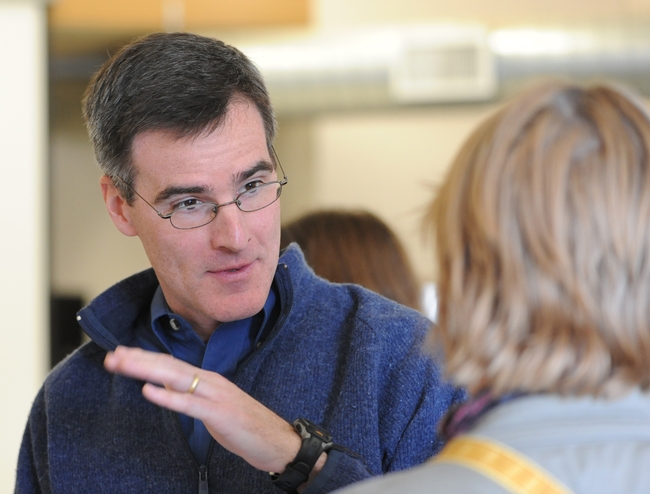
Neal Williams discusses native bees at a recent conference in Woodland. (Photo by Kathy Keatley Garvey)
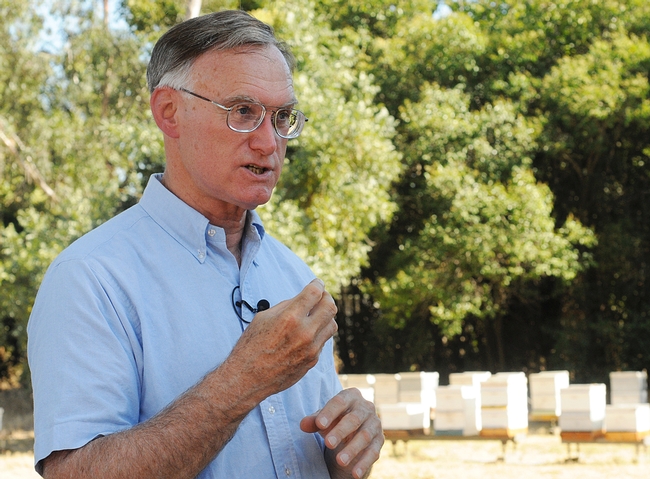
Extension apiculturist Eric Mussen at the Harry H. Laidlaw Jr. Honey Bee Research Facility, UC Davis. (Photo by Kathy Keatley Garvey)
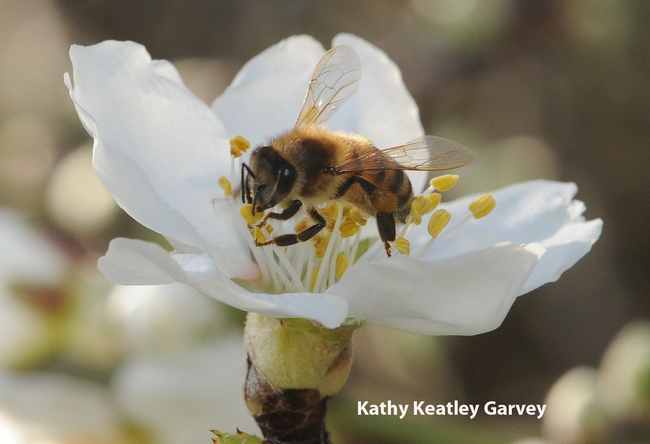
Honey bee working an almond blossom at UC Davis. (Photo by Kathy Keatley Garvey)
Turf Tidbits
March is a great time to rehabilitate your lawn by filling in bare patches with seed. The spring season offers temperatures moderate enough to foster new growth through germination of turf seeds, but it remains cool enough not to stress new grass once it begins growing and allows it time to mature and take root.
The issues to consider before you start your lawn rehabilitation job are to note the type of turf that already exists in your space so that you can get a matching blend, the amount of sun and shade the particular area might get, and the amount of water the area gets so that you get the proper seeds for your needs The materials you will want to have for the tasks are a rake, a shovel, a bag or two of topsoil made from organic matter, high quality turf seed, starter fertilizer, and a hand-watering container.
The first order of business is to isolate the area you are working on from any pets or foot traffic because turf seeds and seedlings are delicate and will be ruined by even light trampling. Secondly, you want to clear the area of any old dead turf or other dead or dying matter covering the ground you are going to work on. Once the area is cleared up and ready, you will want to dig down about 4 to 6 inches and till the soil until it is soft and workable and all of the large clods have been broken up. You will rake the area so that the ground is even with the other areas where grass is already growing and all of the dirt is uniform in size and texture and elevation. Next, generously spread the turf seed in the area you have prepared making sure to slightly overspread seed on the edges as evenly as possible. Finally, you will cover the seed with about an inch of topsoil which will thin out once you add water. You should not be able to see any seeds through the topsoil; at the same time you are not trying to bury the seeds any deeper than just under the surface of the soil. Once all of the topsoil has been uniformly applied and the seeds are completely covered you will very gently water the area trying to apply the watering as delicately as possible to prevent erosion of the work you just did.
You will want to inspect the area twice a day for 2 weeks to make sure that the seeds continue to maintain minimal moisture content. You want to keep the topsoil slightly moist constantly until you notice baby turf emerging. Once the new grass begins to grow you will want to scale the watering back to allow the new turf to establish its roots. A watering balance is needed at this point, you want to water thoroughly and then allow the grass to dry out almost completely before the next application of water. A starter fertilizer should be applied at this time also to encourage mature rooting and growth. You will want to closely consult the directions on the seed packaging to check for varying details. (NOTE: the Master Gardener program does not endorse the Kellogg's or Scott's products, these photos are for demonstration purposes only)
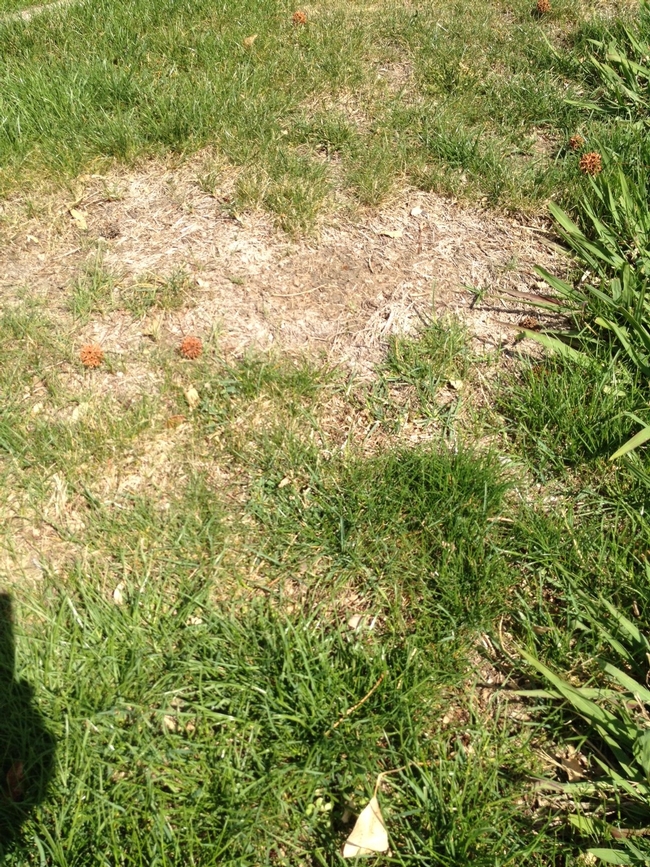
Turf that needs rehab. (photos by Ed Walbolt)
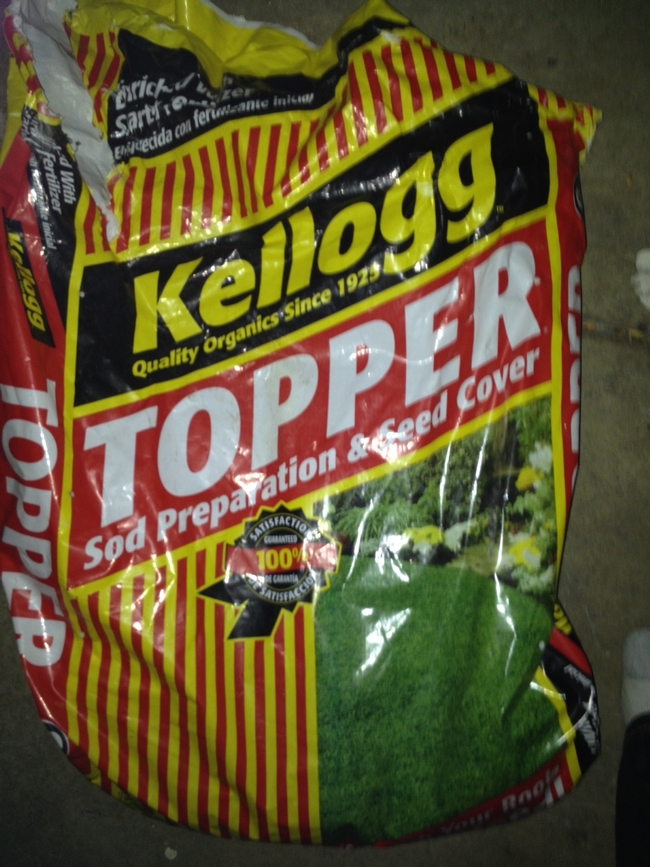
Top soil bag.
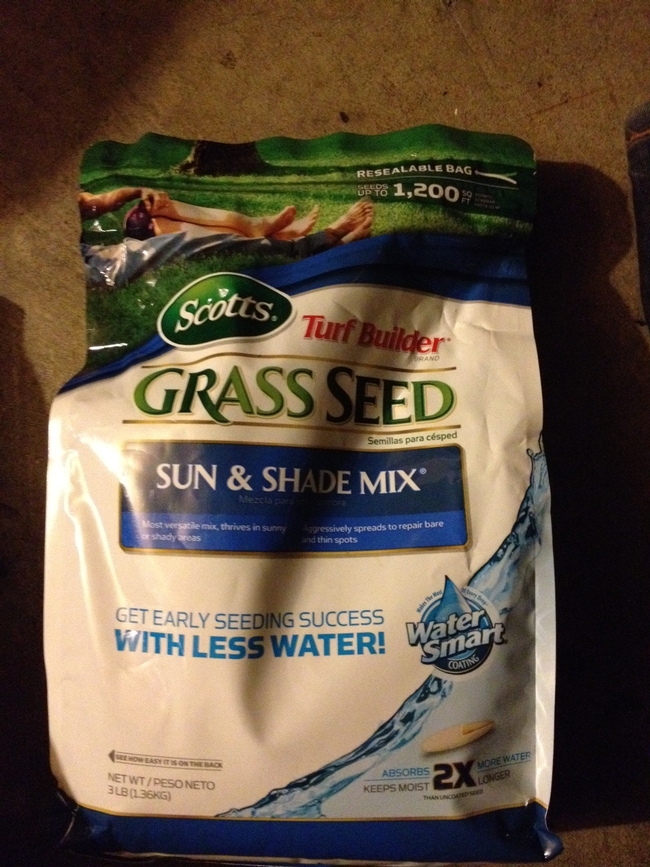
Seed bag.


